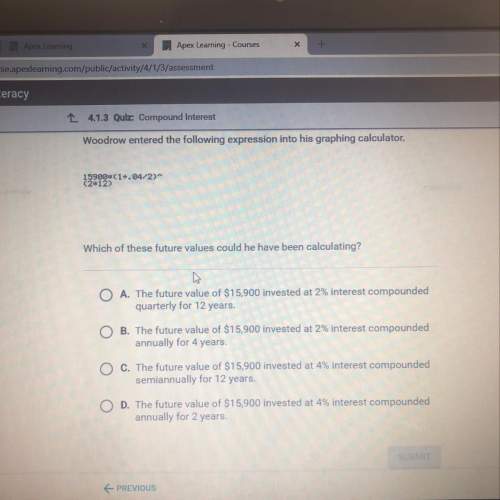
Mathematics, 05.06.2021 14:00 okokalyssa
The sum of an arithmetic sequence can be found by the formula Sn = n(2a
+ (n - 1)d). Use the formula to find the sum of first 10 terms of the sequence
{-3.2, 7, 12, 17. 22...)

Answers: 2


Other questions on the subject: Mathematics

Mathematics, 21.06.2019 20:30, angellll4455
Secant be and cf intersect at point d inside a what is the measure of cde
Answers: 1

Mathematics, 21.06.2019 22:10, leslie4759
Which function can be used to model the monthly profit for x trinkets produced? f(x) = –4(x – 50)(x – 250) f(x) = (x – 50)(x – 250) f(x) = 28(x + 50)(x + 250) f(x) = (x + 50)(x + 250)
Answers: 2

Mathematics, 22.06.2019 00:30, breroyalee2584
Fixed rate mortgage offer: purchase price: $170,000 down payment ($34k): 20% term: 30 years interest rate: 4.25% property tax (yearly): $1,500 homeowner’s insurance (yearly): $1,000 use this example from a fixed-rate mortgage calculator to you answer the questions. keep the page open after you complete this question. according to the calculator, the monthly payment demarco and tanya should anticipate paying for principal and interest is $208. $877. $669. $1,200.
Answers: 1
You know the right answer?
The sum of an arithmetic sequence can be found by the formula Sn = n(2a
+ (n - 1)d). Use the formul...
Questions in other subjects:
















